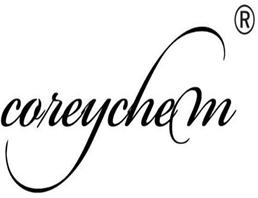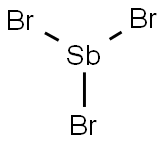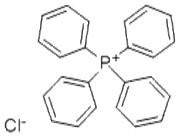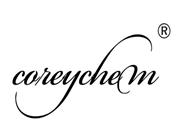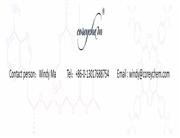| Chemical Properties |
Yellow Crystalline Powder |
| General Description |
Antimony tribromide is the yellow crystalline solid dissolved in hydrobromic acid. Antimony tribromide is decomposed by water giving an antimony oxide and hydrobromic acid. Antimony tribromide is corrosive to metals and tissue. Antimony tribromide is used to make other antimony compounds, in chemical analysis, and in dyeing. |
| Air & Water Reactions |
Water slowly hydrolyzes antimony tribromide to form antimony (III) oxide and hydrobromic acid. The dry powdered oxide ignites on heating in air [Mellor Vol. 9 425.1939]. |
| Reactivity Profile |
Acidic salts, such as ANTIMONY TRIBROMIDE, are generally soluble in water. The resulting solutions contain moderate concentrations of hydrogen ions and have pH's of less than 7.0. They react as acids to neutralize bases. These neutralizations generate heat, but less or far less than is generated by neutralization of inorganic acids, inorganic oxoacids, and carboxylic acid. They usually do not react as either oxidizing agents or reducing agents but such behavior is not impossible. Many of these compounds catalyze organic reactions. |
| Health Hazard |
TOXIC; inhalation, ingestion or contact (skin, eyes) with vapors, dusts or substance may cause severe injury, burns or death. Reaction with water or moist air will release toxic, corrosive or flammable gases. Reaction with water may generate much heat that will increase the concentration of fumes in the air. Fire will produce irritating, corrosive and/or toxic gases. Runoff from fire control or dilution water may be corrosive and/or toxic and cause pollution. |
| Fire Hazard |
Non-combustible, substance itself does not burn but may decompose upon heating to produce corrosive and/or toxic fumes. Vapors may accumulate in confined areas (basement, tanks, hopper/tank cars etc.). Substance will react with water (some violently), releasing corrosive and/or toxic gases and runoff. Contact with metals may evolve flammable hydrogen gas. Containers may explode when heated or if contaminated with water. |
| Safety Profile |
A poison. Corrosive to skin, eyes, and mucous membranes. Reaction with water liberates HBr and antimony trioxide. Can cause severe burns. See also ANTIMONY COMPOUNDS.
|

 China
China



